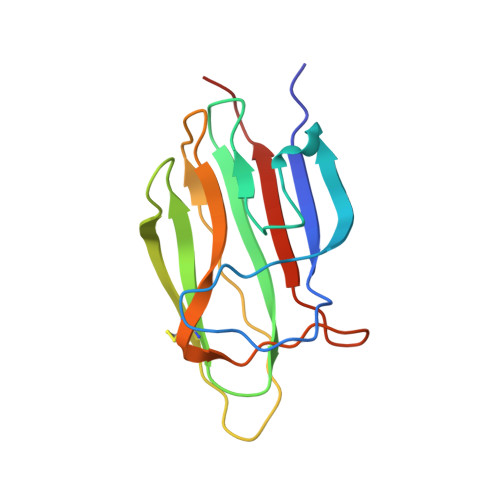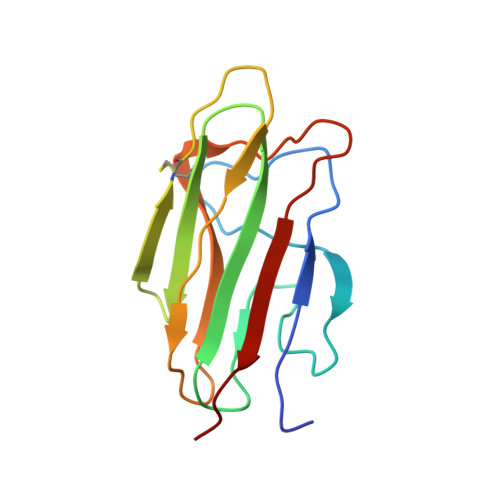Cutting Edge: C1Q Binds Deoxyribose and Heparan Sulfate Through Neighboring Sites of its Recognition Domain.
Garlatti, V., Chouquet, A., Lunardi, T., Vives, R., Paidassi, H., Lortat-Jacob, H., Thielens, N.M., Arlaud, G.J., Gaboriaud, C.(2010) J Immunol 185: 808
- PubMed: 20548024
- DOI: https://doi.org/10.4049/jimmunol.1000184
- Primary Citation of Related Structures:
2WNU, 2WNV - PubMed Abstract:
C1q, the recognition subunit of the C1 complex of complement, is an archetypal pattern recognition molecule with the striking ability to sense a wide variety of targets, including a number of altered self-motifs. The recognition properties of its globular domain were further deciphered by means of x-ray crystallography using deoxy-D-ribose and heparan sulfate as ligands. Highly specific recognition of deoxy-D-ribose, involving interactions with Arg C98, Arg C111, and Asn C113, was observed at 1.2 A resolution. Heparin-derived tetrasaccharide interacted more loosely through Lys C129, Tyr C155, and Trp C190. These data together with previous findings define a unique binding area exhibiting both polyanion and deoxy-D-ribose recognition properties, located on the inner face of C1q. DNA and heparin compete for C1q binding but are poor C1 activators compared with immune complexes. How the location of this binding area in C1q may regulate the level of C1 activation is discussed.
Organizational Affiliation:
Laboratoire de Cristallogenese et Cristallographie des Protéines, Institut de Biologie Structurale Jean-Pierre Ebel, Commissariat à l'Energie Atomique, Centre National de la Recherche Scientifique, Université Joseph Fourier, Grenoble, France.


















